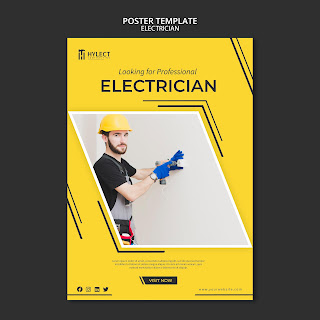Best Practices for Writing a Winning Electrical Proposal
Writing an effective commercial electrical bid proposal template is crucial for landing new clients and jobs in a competitive industry. With countless electricians vying for the same projects, it's important to stand out from the crowd with a well-crafted proposal. In this blog post, we will explore some of the best practices for writing a winning electrical proposal.
Project Overview and Understanding
Understanding the project scope and requirements is fundamental to writing a top-notch proposal. Be sure to include:
A brief overview of the project including location, size, type of building, etc.
Demonstrate your understanding of the desired outcomes, goals, and needs of the client through a succinct problem statement.
Summarize any site visits, meetings, or project discussions to showcase your research and due diligence.
Reference applicable codes, regulations, and standards you will adhere to in your approach.
Company Qualifications
Highlight why your company is the best choice with:
Number of years in business and industry experience.
Previous similar project examples and case studies with references.
Relevant licenses, certifications, accreditations, and professional affiliations.
Bonding and insurance specifics to assure the client of your ability to handle risks.
Size of your company, staff availability, and resources to complete the project on schedule.
Unique expertise, capabilities, or value-added services you provide.
Scope of Work
Clearly define the services, tasks, and deliverables to be provided through:
A detailed tasks and milestone schedule with timelines and responsibilities.
Descriptions of all anticipated electrical work and materials.
Clarification of any assumptions made about existing site conditions.
Identification of any exclusions or limitations on your proposed scope.
Explanations of how the work will be performed with an emphasis on quality and compliance.
Project Team
Give confidence in your abilities by showcasing:
The lead project manager and their qualifications.
Key team members such as engineers, foremen, electricians, and their roles.
Available support personnel for administrative, billing, or change order needs.
Methods of coordination, communication, documentation, and reporting.
Pricing and Financial Terms
Provide transparency with:
A detailed itemized cost estimate broken down by task.
Clarification on billing schedule, payment terms, change orders, and contingency amounts.
Options for lump sum, time and materials, or other pricing structures and estimates of total project cost.
Payment schedule and options for deposits, progress payments, retainage amounts.
Explanation of any escalation clauses or alternate pricing for scope changes.
Risks and Challenges
Demonstrate forethought by addressing:
anticipated risks, challenges, or uncertainties for this project.
Mitigation strategies and contingencies you have planned.
Assurances you will manage risks properly and complete the project on time.
Quality Assurance and Closeout
Conclude by describing:
Inspection and testing procedures during and after completion.
Documentation turnover including as-builts, manuals, and closeout packages.
Warranties on work and materials to ensure client satisfaction long-term.
Post-project support and any additional services after turnover.
Conclusion
End with a concise summary of why you are the ideal choice along with a call to action requesting the client's consideration and next steps. Highlight key differentiators and benefits one last time. Thank the client for their time and interest.




Comments
Post a Comment